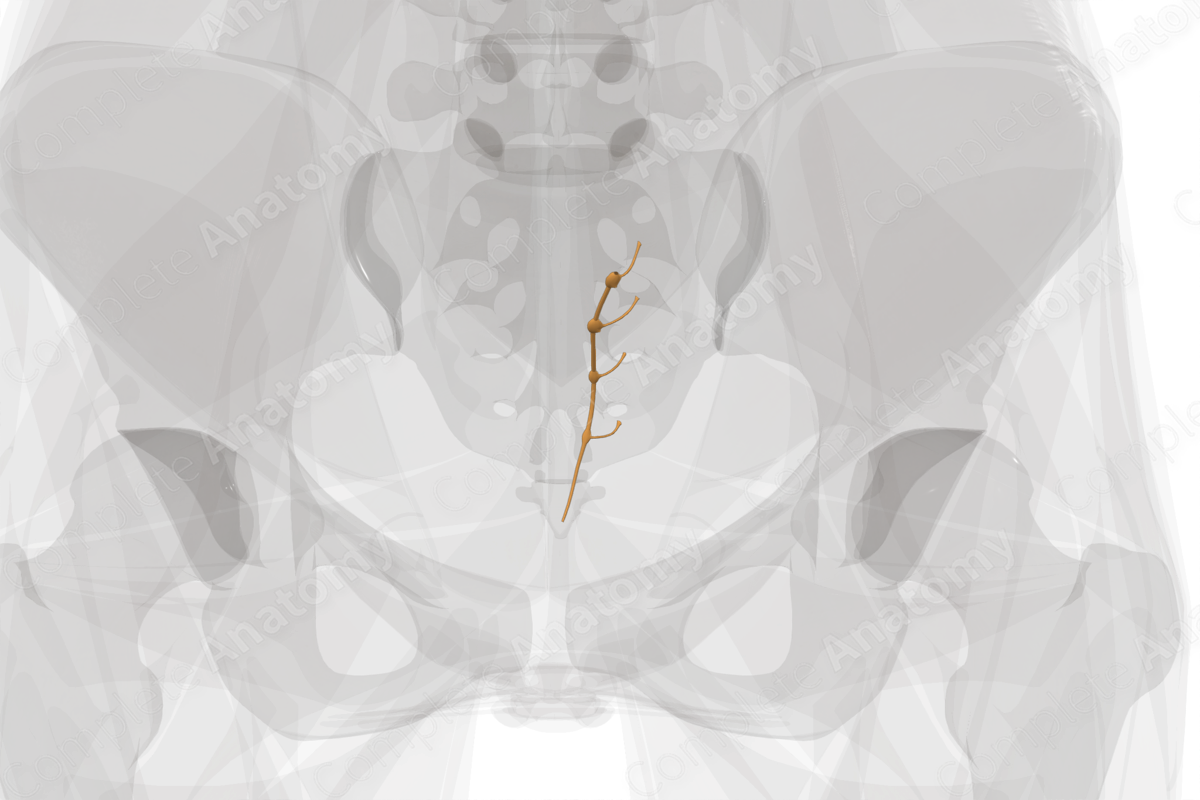
Description
There are typically four sympathetic chain ganglia found at sacral levels, anterior to the sacral foramina. They are known as sacral paravertebral ganglia. The neurons in these ganglia are postganglionic sympathetic neurons that synapse with axons from preganglionic sympathetic neurons.
Preganglionic sympathetic axons emerge from the spinal cord at all thoracic nerve levels, in addition to the first and second lumbar nerve levels. Only at these levels do axons enter the sympathetic trunk via myelin rich axon tracts called the white rami communicantes. Thus, none of sacral paravertebral ganglia are directly connected to the sacral spinal cord. Instead, the sacral paravertebral ganglia receive presynaptic sympathetic axons that have descended through the sympathetic trunk from higher levels, primarily the twelfth thoracic, first lumbar, and second lumbar spinal levels. These tracts are the gray rami communicantes.
Postganglionic sympathetic axons leave sacral ganglia, via myelin poor tracts called the gray rami communicantes, to join the first to fourth sacral nerves and travel to targets in the body. Additional axons will leave the sacral chain ganglia through sacral splanchnic nerves.
Neurons in the sacral paravertebral ganglia will innervate blood vessels, sweat glands, and arrector pili muscles at segmental locations, roughly corresponding to the dermatome of the equivalent spinal nerve.
Axons passing through the sacral splanchnic nerves will synapse in the inferior mesenteric ganglia and target the hindgut and pelvic viscera.
Related parts of the anatomy




